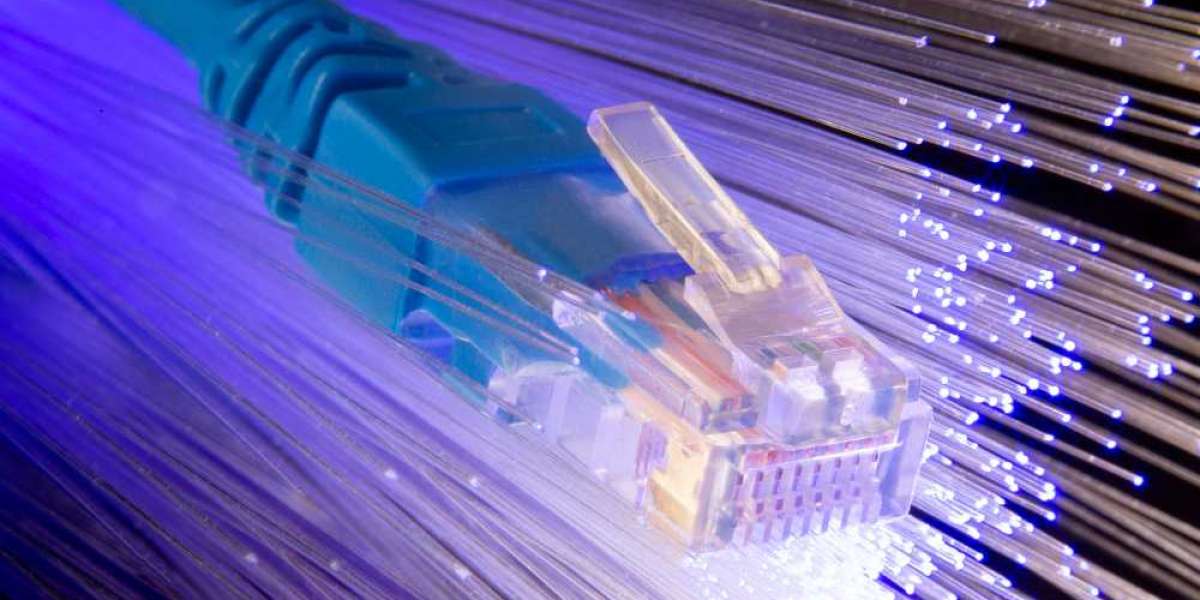What is Fiber Internet?
Fiber internet, or fiber-optic internet, uses fiber-optic cables to transmit data. Unlike traditional copper cables used by DSL or cable internet, fiber-optic cables are made of thin strands of glass or plastic that can carry data as pulses of light. This technology allows for much faster speeds and better reliability compared to other types of internet connections.
The key advantages of fiber-optic internet are its speed and capacity. Fiber connections can deliver high-speed internet to your home or office, enabling you to stream, download, and upload at remarkable speeds. Because data travels via light signals, fiber optic cables can carry far more data over long distances with minimal loss in quality. This makes fiber-optic internet perfect for households or businesses that require large amounts of data to be transferred efficiently.
Why is Fiber Internet Considered the Best?
When looking for the best fiber internet, it’s important to understand why fiber-optic connections are often preferred over other internet types. Here are some reasons why fiber internet is considered one of the best options available:
1. Lightning Fast Speeds
One of the most notable benefits of fiber-optic internet is its speed. Fiber internet can offer speeds up to 1 Gbps (Gigabit per second) or higher, allowing for seamless streaming, gaming, video conferencing, and more. With fiber, you can download large files in a fraction of the time it would take with other types of internet connections. Whether you’re downloading software, watching 4K videos, or participating in a video call, fiber offers a smooth, high-speed experience without buffering or lag.
2. Reliability and Stability
Unlike cable or DSL internet, fiber-optic internet is less prone to disruptions. With copper-based connections, data can degrade over long distances, leading to slower speeds and connection dropouts. Fiber-optic cables, on the other hand, can carry data over greater distances without losing signal quality. This means fiber internet is generally more reliable, especially in rural or remote areas where other types of internet might struggle.
Additionally, fiber-optic networks are not affected by electromagnetic interference, which can cause issues with other types of connections. This means that fiber internet offers a more stable connection, even in environments with heavy electrical equipment or interference from nearby devices.
3. Symmetrical Upload and Download Speeds
Another advantage of fiber internet is that it often offers symmetrical upload and download speeds. With cable or DSL connections, download speeds tend to be faster than upload speeds. This can be a problem if you need to upload large files, stream live content, or participate in video calls. Fiber-optic internet can offer equal speeds in both directions, ensuring that your upload and download experiences are just as fast and efficient.
4. Future-Proof Technology
Fiber-optic networks are built to last. As demand for faster internet speeds continues to grow, fiber-optic technology is well-positioned to meet these future demands. Fiber networks can easily be upgraded to support even faster speeds by upgrading the equipment at either end of the connection. Unlike older copper cables, which are limited in their capacity to carry data, fiber can support advancements in technology and keep up with the increasing demand for faster internet.
For those who want an internet connection that can keep up with future technological innovations, fiber internet is the way to go.
5. Lower Latency
Latency refers to the delay that occurs when data is sent from one point to another. High latency can lead to lag in gaming, delays in video calls, and buffering in streaming services. Fiber internet offers significantly lower latency compared to other types of connections. This makes fiber an excellent choice for online gaming and other real-time applications where delays can negatively impact the user experience.
Whether you’re engaging in a video conference, participating in a live stream, or playing a fast-paced online game, fiber internet provides quick response times and minimal lag, ensuring a smoother, more enjoyable experience.
How Fiber Internet Works
To better understand the best fiber internet, it helps to know how fiber-optic connections work. Fiber-optic cables consist of long, thin strands of glass or plastic, which are arranged in bundles. These strands are designed to transmit data as pulses of light. The light pulses travel through the fibers, bouncing off the inside walls of the cable until they reach their destination. Because light travels at incredibly high speeds, fiber-optic connections can transfer data much faster than traditional electrical signals used by copper cables.
Fiber-optic cables can carry massive amounts of data, allowing for faster internet speeds and the ability to transmit high-definition video, large files, and other data-rich applications without compromising on quality. The cables themselves are also designed to minimize signal loss, so your internet connection remains strong and stable even over long distances.
There are two main types of fiber-optic connections: FTTH (Fiber to the Home) and FTTP (Fiber to the Premises). Both types bring fiber-optic cables directly to your home or business, ensuring you get the best possible speeds and performance. The primary difference lies in the infrastructure. FTTH installs fiber directly into your home, while FTTP may install fiber to a nearby location, such as a street or building, with copper or another medium used for the final connection.
Advantages of Fiber Internet Over Other Connections
While fiber-optic internet has many advantages, it's essential to compare it with other popular internet connection types, such as DSL, cable, and satellite.
Fiber vs. DSL
DSL (Digital Subscriber Line) is an older technology that uses copper telephone lines to deliver internet access. While DSL is widely available and can offer decent speeds, it’s much slower compared to fiber-optic connections. DSL also suffers from a more significant drop in performance over long distances. Fiber internet, on the other hand, provides much faster speeds, better reliability, and lower latency.
Fiber vs. Cable
Cable internet uses coaxial cables to transmit data. While cable can provide faster speeds than DSL, it typically cannot compete with the speed and reliability of fiber-optic connections. Cable internet can also become congested during peak usage times when many people in your area are using the internet, leading to slower speeds. Fiber-optic connections, by contrast, can handle higher traffic volumes with less impact on performance, making them the more reliable option.
Fiber vs. Satellite
Satellite internet is often used in rural or remote areas where other types of internet are unavailable. While satellite internet can provide a connection in these areas, it tends to have much higher latency and slower speeds compared to fiber-optic connections. Additionally, satellite internet is often subject to weather conditions, which can cause disruptions in service. Fiber-optic internet, by contrast, is more stable and can offer much higher speeds, even in rural areas where fiber is available.
How to Choose the Best Fiber Internet for Your Needs
When looking for the best fiber internet, there are a few factors to consider. Here are some tips to help you make the right choice:
1. Speed Requirements
Consider how much speed you need based on your internet usage. If you primarily use the internet for browsing, email, and social media, lower speeds may suffice. However, if you stream movies and TV shows in 4K, work from home, or play online games, you'll likely need faster speeds to ensure a smooth experience.
2. Availability
Fiber-optic internet is still expanding, so it may not be available in all areas. Check with local providers to see if fiber internet is offered in your location. Some areas may have limited coverage, while others may have robust fiber networks in place.
3. Budget
Fiber internet tends to be more expensive than other types of internet, but the benefits it offers often justify the cost. Compare prices and see if fiber internet fits within your budget. Many providers offer different pricing plans based on the speed and features you need.
4. Customer Service
Good customer support can make a significant difference when it comes to troubleshooting technical issues or managing your service. Look for providers with a reputation for reliable customer service to ensure you get the help you need when problems arise.
Conclusion
Fiber-optic internet is the best choice for those who want fast, reliable, and future-proof internet. It provides lightning-fast speeds, low latency, and great reliability, making it the top option for streaming, gaming, and heavy internet usage. Whether you're looking for the best fiber internet for your home or business, fiber-optic connections offer a range of benefits that other internet types simply can’t match.







